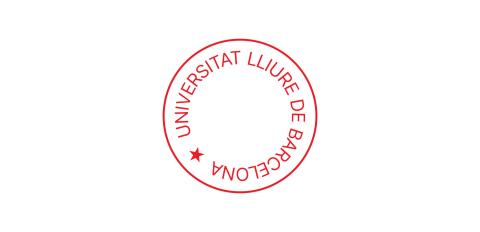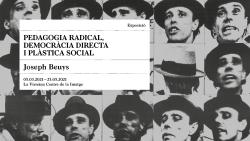Radical Teaching, Direct Democracy and Social Plastic
Joseph Beuys
05.03.2021 – 23.05.2021
Curator: Valentín Roma
Joseph Beuys (Krefeld, 1921 – Düsseldorf, 1986) embodies, perhaps unwillingly, some of the major dichotomies paired by art during the 20th century. A shaman and a clown, a torchbearer at dawn and a messenger at dusk, Beuys the man and his body of work present a three-fold challenge that is not always easy for contemporary spectators to grasp: how they should handle artists’ provocation; what temptations might lead them to cynicism; to what extent disorder reinvents the public sphere.
Beuys occupies a fundamental place in the dominant accounts concerning art of the 20th century. Even so, or perhaps as a consequence, his work is still interpreted on the basis of extreme dichotomies stoked by certain historiographical approaches and by those stereotypes of a reactionary nature that read contemporary artistic output in terms of decay.
In any event, whether Beuys is viewed as a shaman or as a clown, as a torchbearer for the art to come or as a messenger telling of the supposed decline of the arts, it is necessary today to restore to their rightful place the various frameworks that shaped his career, among them, his period of history, the era that extends from the late 1950s to the mid-1980s, the height of the Cold War; his cultural context, in which the German institutions took over trusteeship of the public sphere, implementing a social-democratic perspective and resulting in an ideological divide with other visions of culture; and lastly, his own evolution as an artist, the path – often ignored – that led Beuys from a relatively traditional sculptural practice, linked to northern European and even figurative primitivism during the first half of the 1950s, to his association with the Fluxus movement and his later acclamation by the media.
This exhibition, based on the holdings of the Archivo Lafuente in Santander, considers three different aspects that are crucial to understanding Beuys’s career. Each of them is explored in a chapter specifically given over to the various projects that the artist showed in documenta in Kassel in 1972, 1977 and 1982, which sum up, as it were, the three themes that provide the structure of this display.
The “Radical Teaching” section focuses on Beuys’s activity in the realm of art education, in which he advocated a veritable dismantling of the codes, methodologies and ways of thinking of standard teaching, endeavouring to fulfil the mission of the Freie Internationale Universität (FIU, Free International University), the educational and activist platform for creativity that he founded in 1973 together with Heinrich Böll, Klaus Staeck, Georg Meistermann and Willy Bongard. The FIE’s manifesto sets out this mission, stating: “Each one of us has a creative potential which is hidden by competitiveness and success-aggression. To recognise, explore and develop this potential is the task of the school”.
The “Direct Democracy” section explores the construction of structures of citizens’ counter-power through which the role of artists in the public sphere could be expanded. Examples include Beuys’s contribution to the founding in 1967 of the Deutsche Studentenpartei (DSP, the German Student Party), which styled itself a ‘meta-party’; his interest in the Organisation für direkte Demokratie durch Volksabstimmung (Organization for Direct Democracy Through Referendum), set up in 1971; and his involvement in Die Grünen (the German Green Party), standing as one of its candidates in the European Parliament elections held in 1979.
Lastly, “Social Art” looks at Beuys’s formulation of a new symbolic space for the production and use of the work of art, raising its relevance outside the legitimising protocols of the theorising elites, and beyond the formalisms and the ready-made of Duchamp and the Dadaists, within a creation and dissemination set-up that the artistic and commercial systems were, to an extent, unable to appropriate.




!["Tota persona és artista" [Jeder Mensch ist ein Künstler], 1981 ©Joseph Beuys: VG Bild-Kunst, Bonn Joseph Beuys](/lavirreina/sites/default/files/styles/gallery_images/public/2021-02/artist.jpg?itok=YPs2E_xs)
!["La democràcia és divertida" [Demokratie ist lústig], 1972 ©Joseph Beuys: VG Bild-Kunst, Bonn Joseph Beuys](/lavirreina/sites/default/files/styles/gallery_images/public/2021-02/lusting.jpg?itok=JZMEv5M9)
!["Escombrada" [Ausfegen], 1973 ©Joseph Beuys: VG Bild-Kunst, Bonn Joseph Beuys](/lavirreina/sites/default/files/styles/gallery_images/public/2021-02/1maig.jpg?itok=CJioeLg9)


